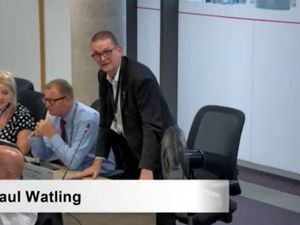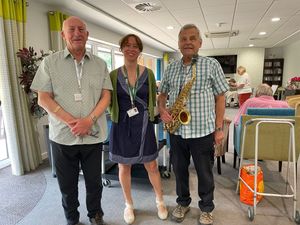Ambulances queue for 1,800 hours in one month outside Shropshire A&Es
Ambulances spent more than 1,800 hours waiting outside Shropshire's emergency hospitals last month, figures have revealed.
The issue of 'handover delays', where an ambulance crew is ready to discharge a patient into a hospital's care but there is no space, have affected hospitals across the region.
West Midlands Ambulance Trust (WMAS) is to discuss the matter when its board of directors meet this week, with a report repeating its previous warning that the situation is affecting the ability to respond to the public's requests for help.
The issue has been made worse by a number of factors, including Covid restrictions limiting capacity in hospitals, however the shortage of domiciliary care places is a major issue, with the lack of available places leaving hospitals unable discharge healthy patients.
A report from Mark Docherty, executive director of nursing and clinical commissioning at West Midlands Ambulance, will be considered when the board meets on Wednesday.
The report outlines the length of the waits impacting the service.
It shows that during December ambulances waited for a total of 1,862 hours outside county hospitals – 935 at Princess Royal Hospital in Telford, and 927 at Royal Shrewsbury Hospital, both managed by Shrewsbury & Telford Hospital NHS Trust (SaTH).
The number is slightly down on November, where ambulances waited for 2,002 hours outside the hospitals.
But the figure demonstrates the difficulties faced in providing free ambulances to respond to new incidents.
In his report Mr Docherty says: "The issue of patient handover delays continues to deteriorate and the impact of this means we are keeping patients waiting for very long periods for an ambulance response."
The director added that the situation was the worst ever experienced by the trust.
He said: "This is causing significant serious patient safety concerns. The lost hours for the year to date peaked in October 2021 when there were in excess of 15,000 lost hours due to handover delays over 30 minutes; this is the highest number of lost hours ever experienced by WMAS."
Mr Docherty's paper to the board also includes comments from the Royal College of Emergency Medicine, which outlines how delays are leading to significant harm for patients.
The comments came after an Emergency Medical Journal (EMJ) article that found five hour plus waits increase the risk of death for patients.
Dr Katherine Henderson, president of the Royal College Emergency of Medicine, said: “We welcome this paper, which adds to the evidence of what we have long warned – that long-waiting times present a serious threat to patient safety.
“Performance in Emergency Departments has been in decline for many years now, while waiting times have risen significantly; the risk to patient safety is a growing problem. It is unacceptable and deeply concerning. No patient should be kept waiting to be admitted to a bed."
The issue of ambulance waiting times has become a growing focus in the county, and earlier this month Shropshire Council said it would be lobbying to set up its own ambulance service.
SaTH has previously outlined a number of measures it is taking to address the situation, apologising for the impact on patients.
Speaking last year, Dr Nigel Lee, chief operating officer at The Shrewsbury and Telford Hospital NHS Trust, said: "We want to reassure you that we are continuing to do everything we can, alongside partners, to deal with the delays and my colleagues are working exceptionally hard to ensure that we offer the high-level of care we want to provide for all those who use our services.”
The trust has also repeatedly urged people to consider whether they really need to attend A&E for treatment.





